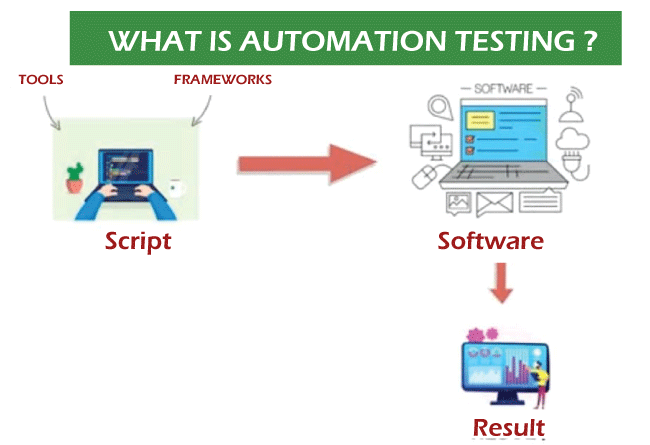Making Certain Success in Automation Checking: Secret Metrics, Difficulties, and Solutions Every QA Group Need To Know
In the realm of software quality assurance, the landscape of automation screening is ever-evolving, requiring a thorough strategy to make sure seamless procedures. The journey to mastering automation testing is paved with nuances that require a keen eye for surveillance, analysis, and continuous renovation. As the industry pushes forward, the quest for ideal efficiency in automation screening continues to be a constant quest, advising QA teams to equip themselves with the knowledge and strategies important for victory.
Value of Secret Metrics
Understanding the relevance of crucial metrics is crucial for assessing the performance and effectiveness of automation screening procedures. Secret metrics work as quantifiable actions that provide important insights right into numerous facets of the screening procedure, such as examination coverage, examination implementation time, problem thickness, and test instance efficiency. By analyzing these metrics, QA groups can recognize traffic jams, inadequacies, and locations for renovation within their automation screening framework.
One important element of crucial metrics is their ability to track progress and monitor the overall health of the testing procedure (automation testing). They make it possible for stakeholders to make enlightened decisions based on data-driven understandings, which can cause extra effective screening techniques and better resource appropriation. In addition, key metrics can assist teams established realistic objectives, determine the success of automation campaigns, and show the ROI of automation testing efforts

Common Challenges Dealt With
Difficulties typically encountered in automation testing processes can considerably impact the general efficiency and efficiency of QA groups. Among the major challenges is the selection of the best test instances for automation. Not all test instances appropriate for automation, and picking the incorrect ones can lead to lost time and sources. In addition, preserving examination scripts can be a daunting task, specifically as the application undertakes regular changes. Examination script maintenance requires constant updates and modifications to ensure they reflect the existing capability accurately. One more common difficulty is the preliminary financial investment required for establishing automation structures and devices. This can be a barrier for some companies, especially smaller ones with minimal budget plans. Automation screening may not cover all aspects of testing, such as functionality and customer experience screening, which still require manual intervention. Overcoming these challenges requires proper planning, tactical test instance option, durable maintenance processes, adequate sources, and a clear understanding of the limitations of automation screening.
Reliable Solutions for Challenges
To resolve the barriers come across in automation testing, carrying out efficient options is vital for enhancing the effectiveness and productivity of QA teams. One key service is to spend in robust training programs for QA groups to ensure they have the essential skills to properly make use of automation devices. Training can connect knowledge gaps, improve understanding of automation structures, and boost scripting capacities, ultimately leading to much more effective examination production and implementation.
Another essential remedy is to establish clear interaction networks within the QA team and with other stakeholders, such as programmers and project managers. Efficient interaction helps in lining up assumptions, sharing progression updates, and immediately resolving problems or obstructions that might develop during the automation screening process.

Tracking and Evaluation Methods
Carrying out reliable tracking and analysis techniques is critical for making certain the success and efficiency of automation screening procedures. By using surveillance tools, QA teams can track the efficiency of test manuscripts, recognize traffic jams, and identify locations for improvement. Real-time tracking enables fast discovery of concerns, making it possible Read More Here for rapid response and resolution. In addition, analyzing examination outcomes and metrics offers valuable insights into the top quality of the software being evaluated and the effectiveness of the screening technique.
One key method in tracking and evaluation is making use of control panels that combine appropriate metrics and KPIs in a visually available format. These control panels offer a comprehensive review of examination execution status, test insurance coverage, problem trends, and various other important info. Regularly assessing and evaluating these control panels can assist QA teams make informed decisions, focus on jobs, and maximize testing initiatives.
Furthermore, applying automated notifies and alerts based on predefined thresholds can enhance positive surveillance and timely treatment. By setting up alerts for performance deviations or test failures, teams can address issues without delay and stop them from rising. Overall, surveillance and analysis techniques play a crucial function in making sure the effectiveness and success of automation screening initiatives.
Constant Improvement Techniques
Enhancing the efficiency of automation screening procedures demands the regular improvement of methods and methods. One vital technique to enhancing automation testing processes is to carry out regular testimonials and retrospectives.

Conclusion
In conclusion, it is essential for QA groups to recognize the crucial metrics, redirected here obstacles, and remedies in automation testing to guarantee success. By meticulously keeping an eye on and evaluating information, carrying out efficient options to typical obstacles, and continually boosting techniques, QA teams can maximize their screening procedures and deliver high-quality software application products. Abiding by these practices will inevitably lead to extra reliable and reliable automation screening methods.
By evaluating these metrics, QA groups can identify traffic jams, inadequacies, and locations for enhancement within their automation testing framework.
Furthermore, essential metrics can assist groups set realistic objectives, measure the success of automation campaigns, and show the ROI of automation screening efforts.
Difficulties commonly encountered in automation screening procedures can substantially impact the overall efficiency and effectiveness of QA teams. Automation screening might not cover all elements of screening, such as usability and customer experience testing, which still call for hands-on treatment.In final thought, it is crucial for QA groups to understand the essential metrics, difficulties, and solutions in imp source automation screening to ensure success.